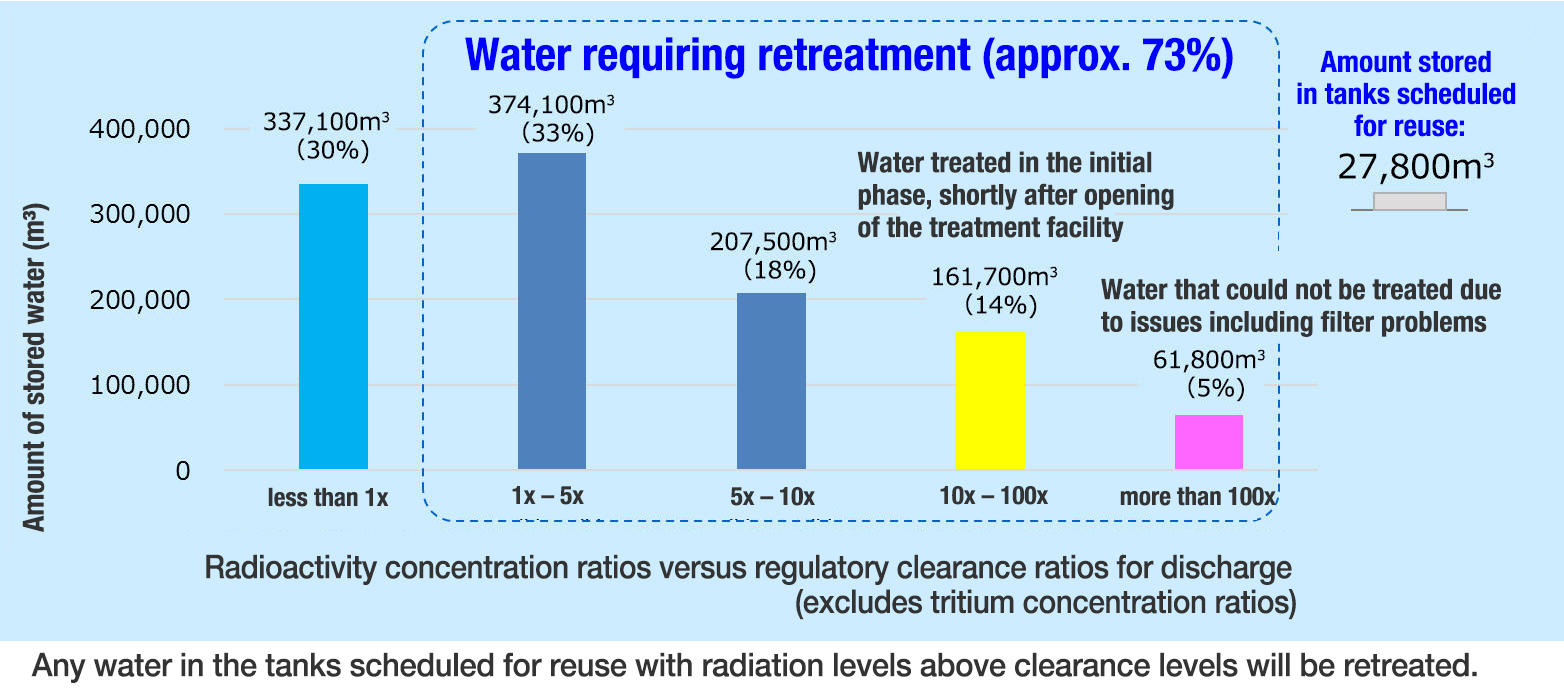FAQ
ALPS treated water, tritium and monitoring
Currently about 70% of the water stored in the tanks contains radioactive materials other than tritium at concentrations that exceed regulatory standards. This was done to quickly minimize the impact of the stored water on areas surrounding the nuclear power station for a period after the accident by giving priority to processing quantities.
Before any discharge, this water is repeatedly treated to reduce the concentration of these radioactive materials to levels below the regulatory standards. Although the treatment process cannot remove tritium, it will be diluted significantly using seawater to ensure that regulatory standards are met. This procedure will also further dilute radioactive materials other than tritium, thus ensuring greater safety.
*In September 2020, the Tokyo Electric Power Company conducted an experiment to evaluate the performance of ALPS secondary treatment. The results confirmed that after secondary treatment, the concentration of radioactive materials could be reduced, and the sum of the legally required concentrations for nuclides targeted for removal (excluding tritium) could be brought below 1. (Sum of ratios of legally required concentrations of nuclides targeted for removal (62 nuclides) + carbon-14: J1-C group: before secondary treatment = 2,406; after secondary treatment = 0.35)

ALPS treated water, tritium and monitoring
- Q Is there a chance of ALPS treated water containing other radioactive materials in addition to tritium?
- Q Why discharge the ALPS treated water? Can’t it be stored?
- Q If ALPS-treated water is safe, why is it being stored? Surely it is only being stored because it is unsafe.
- Q Is there a chance of ALPS treated water containing other radioactive materials in addition to tritium?
- Q What is tritium?
- Q If tritium is a radioactive material, shouldn’t it be dangerous?
- Q Does tritium become concentrated in fish? Will eating fish be dangerous?
- Q What kind of monitoring is implemented when discharging ALPS treated water into the sea?
- Q When discharging ALPS treated water into the sea, what will happen if the monitoring of the local sea area indicates that the discharged water hasn't sufficiently dispersed or another issue is found?
